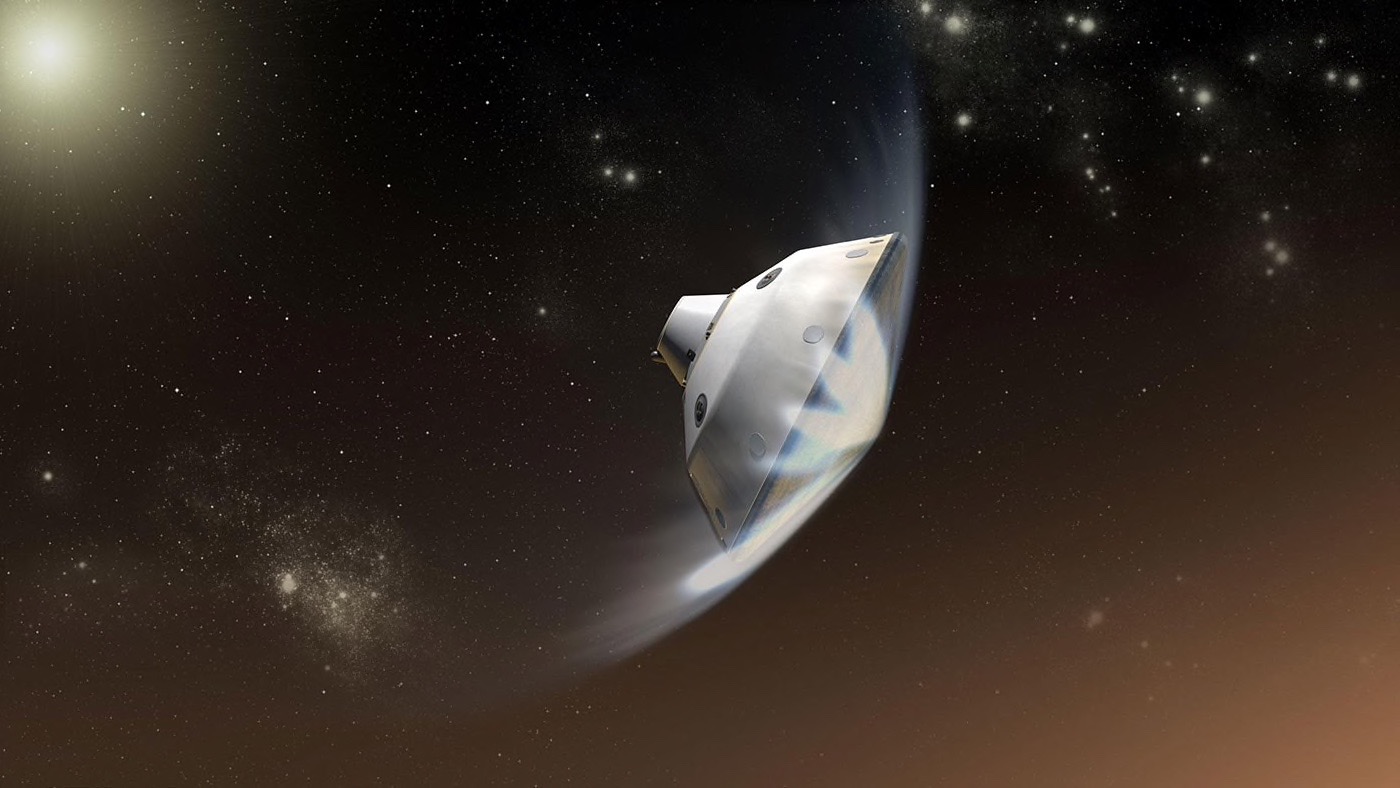Heat Shield for NASA's Mars 2020 Rover Cracks During Test

The heat shield for NASA's upcoming Mars rover suffered a fracture during testing recently, but the incident won't change the mission's launch date, agency officials said.
The Mars 2020 mission is designed to search the Red Planet's surface for signs of ancient microbial life, and the six-wheeled robot will also hunt for and characterize potentially habitable environments. The mission is scheduled to launch in 2020, when Earth and Mars are properly aligned for an interplanetary mission, and arrive at the Red Planet in early 2021.
The heat shield's structural damage, located near the shield's outer edge, happened during a weeklong test at the Denver facility of contractor Lockheed Martin Space, according to a NASA statement released Thursday (April 26). The test was intended to subject the heat shield to forces about 20 percent greater than those it will experience when it hits the Martian atmosphere for entry, descent and landing operations. [NASA's Mars Rover 2020 Mission in Pictures (Gallery)]
The Mars 2020 team found the fracture on April 12. Mission management at NASA's Jet Propulsion Laboratory in Pasadena, California, will work with Lockheed Martin to lead an examination of the cause of the crack and to decide if any design changes should be made, NASA officials said in the statement.
The incident won't delay the Mars 2020 launch, though, which is currently targeted for July 17, 2020, the officials added.
It's important to investigate this crack, because the heat shield is part of the spacecraft's thermal protection system, designed by engineers to keep the Martian rover safe as the vehicle experiences intense heat during atmospheric entry.
NASA officials said the current heat shield will be repaired to permit continued prelaunch spacecraft testing. The Mars 2020 mission team will develop a new heat shield structure over the next year, and once that's completed, the new shield will receive other important components like thermal protection tiles.
Get the Space.com Newsletter
Breaking space news, the latest updates on rocket launches, skywatching events and more!
Follow Doris Elin Salazar on Twitter@salazar_elin. Follow us@Spacedotcom,Facebook and Google+. Original article on Space.com.
Join our Space Forums to keep talking space on the latest missions, night sky and more! And if you have a news tip, correction or comment, let us know at: community@space.com.

Doris is a science journalist and Space.com contributor. She received a B.A. in Sociology and Communications at Fordham University in New York City. Her first work was published in collaboration with London Mining Network, where her love of science writing was born. Her passion for astronomy started as a kid when she helped her sister build a model solar system in the Bronx. She got her first shot at astronomy writing as a Space.com editorial intern and continues to write about all things cosmic for the website. Doris has also written about microscopic plant life for Scientific American’s website and about whale calls for their print magazine. She has also written about ancient humans for Inverse, with stories ranging from how to recreate Pompeii’s cuisine to how to map the Polynesian expansion through genomics. She currently shares her home with two rabbits. Follow her on twitter at @salazar_elin.









